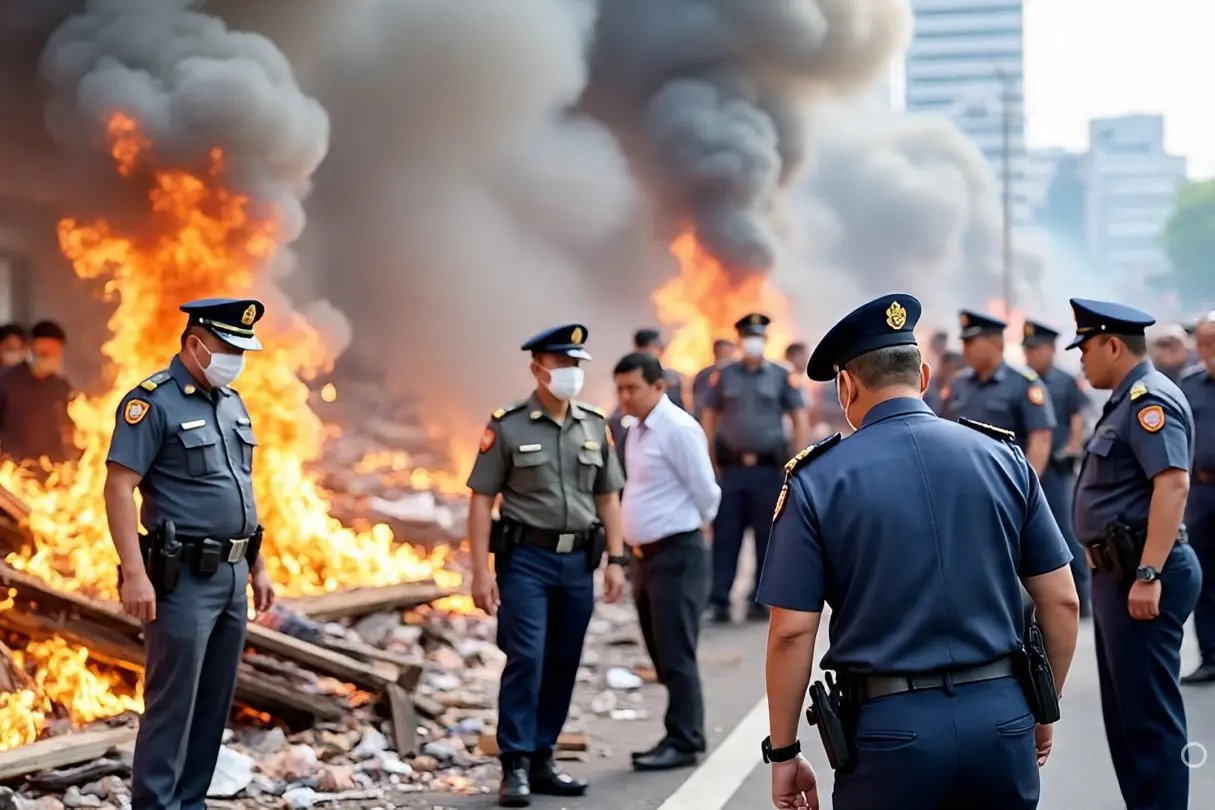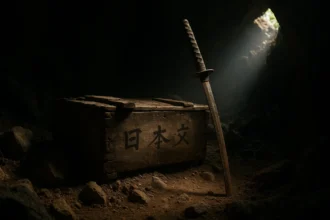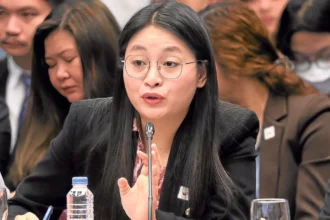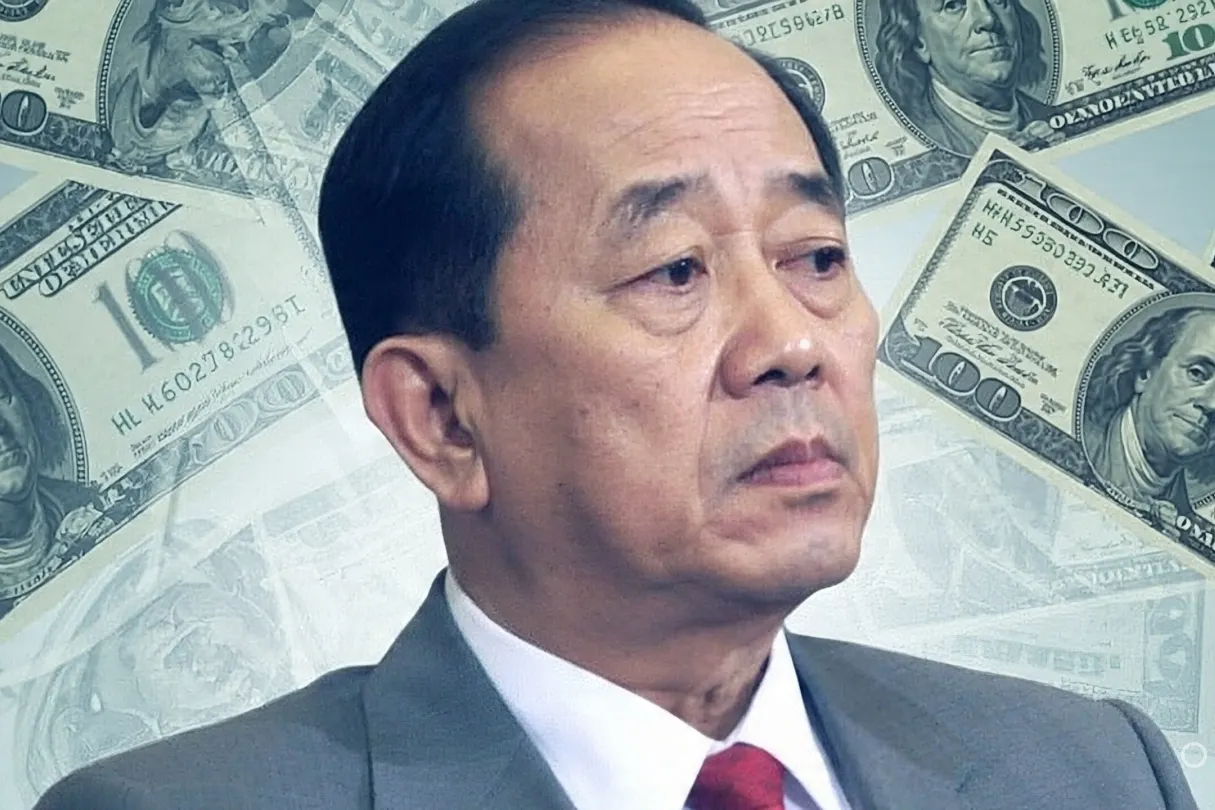📍What Happened at the Erawan Shrine in 2015?
On August 17, 2015, just before 7 PM, a powerful explosion tore through one of Bangkok’s busiest intersections. A pipe bomb had been planted near the revered Erawan Shrine at Ratchaprasong, a location popular with both Thai locals and foreign tourists. The blast killed 20 people and injured more than 100, making it one of the deadliest attacks in Thailand’s modern history. Security footage later showed a man calmly placing a backpack on a bench before walking away moments before the explosion. The nation reeled. For a country that prided itself on safety and hospitality, this kind of mass-casualty event was shocking, unfamiliar, and deeply unsettling. Within hours, police launched a sweeping investigation. Raids were carried out, apartments searched, and foreign suspects were arrested in connection to what authorities framed as a revenge attack—not an act of international terrorism, but a retaliation tied to smuggling crackdowns and controversial deportations.
- 📍What Happened at the Erawan Shrine in 2015?
- 🚨Who Were the Suspects, and What Was the Official Story?
- 🧠The False Flag Theory: Why It Gained Traction
- 🧩The Holes in the Theory
- 🌐Geopolitical Tensions: Uighur Deportation and International Repercussions
- 🔍Why People Believe: The Power of Silence and Secrecy
- 📣Where This Leaves Us
🚨Who Were the Suspects, and What Was the Official Story?
Thai officials later charged two men of Uighur descent with involvement in the bombing—one alleged to have placed the bomb, the other accused of triggering it remotely. Investigators also found evidence of bomb-making materials in an apartment linked to the suspects. One woman, also tied to the safehouse, was later cleared in court due to lack of direct evidence. Authorities insisted from the start that this was not a case of international terrorism or ideological extremism, but rather personal and political retribution for Thailand’s decision to deport Uighur refugees back to a neighboring country a month earlier. Human rights organizations had criticized the deportation as dangerous, and anger had spilled into international protests. Some claimed the attack was carried out by rogue individuals furious at what they viewed as betrayal of their people. Thai officials also emphasized that the bombing was well-planned but isolated, not part of a larger plot. Still, this didn’t stop alternative theories from spreading quickly, both online and in whispered conversations across the country.
🧠The False Flag Theory: Why It Gained Traction
Soon after the bombing, a different theory started gaining ground—that the attack wasn’t what it appeared to be. Some suggested it was a false flag operation: an inside job designed to create fear, justify tighter surveillance laws, or distract from internal problems. The theory emerged not from hard evidence, but from timing, circumstance, and Thailand’s political climate. Critics pointed to the swift reopening of the shrine, the cleanup of the crime scene within days, and the lack of access to independent investigators. They asked why the government was so quick to dismiss any foreign terror connection. Others pointed to tensions at the time—unrest in the southern provinces, pressure on the military-led government, and international criticism over its human rights record. To believers, the bombing seemed to conveniently deliver a distraction. It created a unifying moment for the public, boosted security’s visibility, and allowed stricter public control measures to roll out with little resistance. And because Thailand has a long history of military coups and behind-the-scenes power plays, the public was already conditioned to suspect the possibility of deception.
🧩The Holes in the Theory
Despite the theory’s emotional pull, it lacks hard substance. There’s no evidence showing that the government or military orchestrated the event. The individuals arrested weren’t invented out of thin air. Bomb-making materials were recovered. Surveillance footage showed clear movement patterns, and international observers noted that the attacks bore hallmarks of retaliation—not government theater. More importantly, no credible whistleblowers have stepped forward, no leaked documents surfaced, and no investigative journalists uncovered signs of fabrication. Much of the theory rests on coincidence: the timing of policy decisions, the political landscape, and the ever-present distrust in state institutions. While skepticism is healthy—especially in fragile democracies—conspiracy must be held to the same evidentiary standard as any accusation. If an event was staged, there would be trails. Logistics require coordination, and in today’s age of smartphones and leaks, secrets like that are hard to keep. If anything, the bombing investigation suffered from bureaucratic mishandling and poor public communication, not manipulation.
🌐Geopolitical Tensions: Uighur Deportation and International Repercussions
In July 2015, just weeks before the blast, Thailand deported over a hundred Uighur asylum seekers back to China, sparking global condemnation. Human rights groups argued that the deportees were likely to face persecution. Protests erupted in Turkey, where many Uighurs share ethnic ties. Some activists warned of a possible blowback. The bombing seemed to confirm those fears. If the suspects were indeed connected to that ethnic community, the motive becomes easier to understand. The attack would then represent a violent message—not to the Thai public, but to its government: deport our people, and you will face consequences. Seen through this lens, the bombing had less to do with Thai internal politics and more to do with regional resentment and broken diplomatic trust. However, this angle doesn’t negate the damage such attacks do to domestic unity. Regardless of the motive, the impact fell hardest on civilians—Thais, Chinese, Malaysians, Singaporeans—people who just happened to be in the wrong place at the wrong time. Tragedies like this cross borders in every sense.
🔍Why People Believe: The Power of Silence and Secrecy
Thailand’s culture of controlled information feeds conspiracy. With strict limits on what can be discussed openly—especially around the monarchy, military, and national security—rumors become a form of resistance. When public trials are opaque, when surveillance laws are passed quietly, and when media rarely challenges the official line, the public starts writing its own stories. And in these stories, governments are not protectors—they’re puppeteers. The Erawan Shrine bombing happened in that climate. And even though the case moved through courts, even though evidence was presented, many still believe the full truth wasn’t told. That belief isn’t born from fantasy; it’s rooted in a long history of half-truths, withheld documents, and decisions made behind closed doors. In countries where transparency is rare, people expect manipulation. That expectation then becomes a lens through which all events are interpreted—fairly or not.
📣Where This Leaves Us
For many Thais, the Erawan Shrine bombing is a wound that still hasn’t healed. The spiritual site has since been rebuilt, the tourists returned, and the city moved on. But the memory lingers. Not just the horror of the explosion, but the feeling of confusion, mistrust, and silence that followed. It’s not just about who planted the bomb—it’s about who controlled the story, who benefited, and who was left asking questions with no answers. If Thailand wants to truly move forward, it must foster a culture where accountability isn’t just a press conference. It’s a process—open, verifiable, and public. When governments communicate clearly, share their findings, and allow scrutiny, conspiracy loses its grip. But until that becomes the norm, theories like the false flag claim will always have oxygen. In times of fear, people look for meaning. When meaning isn’t offered, they’ll invent it.




